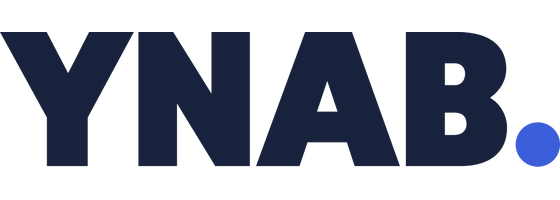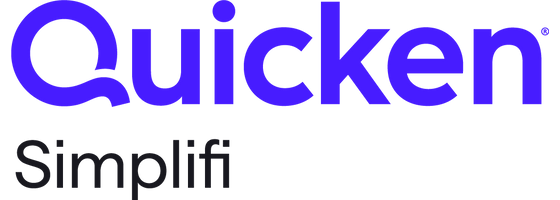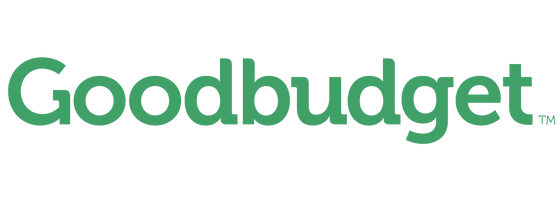Managing your money is critical for your financial well-being. But there’s no one-size-fits-all approach to budgeting, so you need to find a method that works for you. The following budgeting apps can help you do exactly that.
8 best budgeting software apps
|
| | Net worth tracking, budgeting, and automatic categorization; you can add investment management services for an additional cost | Connects your savings, checking, investments, and retirement accounts | | |
| $99 a year or $14.99 a month and free for the first 34 days | Follows zero-based budgeting, very specific in detailing where your money goes | Connects major accounts to track every dollar | | |
| | Build a budget through individual expense categorization and create savings goals individually or with a partner | Connects to banking accounts and helps you cut unwanted subscriptions | | |
| $14.99 a month or $99 a year | Create a budget with or without a partner (you can even invite your financial advisor); also tracks your investments | Uses AI to to organize your transactions, and gets smarter over time; Connects with all your financial institutions — banks, credit card, loan, investment accounts, and more | | |
| $5.99 or $4.97 or $6.57 a month | Simple interface to track spending and create a budget based on expenses | Connect accounts and manually add transactions | | |
| | Tracks expenses to build a personalized budget using your preferred method, including zero-based, envelope, 50/30/20, and more | Imports banking transactions and adds flexibility with categorization | | |
| | Based on the envelope system to track spending and expenses | Manually add transactions and account information, doesn’t connect to accounts | | |
| Free, or Premium version is $17.99/month or $79.99 yearly | It has a zero-based budgeting option that offers budget customization and savings tracking | It doesn’t sync accounts unless you pay for the premium version | | |
1. Best for mimicking Mint: Empower
If you want a budgeting app that is like Mint at the same price, you may want to get Empower. Like Mint, Empower is free to use for everything except investment management services.
Why we recommend it: It’s as close to Mint as you’re going to get for free budgeting and expense tracking, although the format is a little different (which is to be expected). It also lets you connect investment portfolios so you can see your entire net worth in one place rather than checking out many different accounts for the big-picture figures.
Pros:
- Create many different spending goals within specific categories.
- Change and modify categories based on your usage and needs.
- Most tools in the app are free as Mint was, including retirement tracking, investment monitoring, and savings goals.
Cons:
- Investment management services charge a fee.
- No credit-score monitoring.
2. Best for die-hard budget trackers: YNAB
YNAB
Fees
$99 a year or $14.99 a month and free for the first 34 days
At a hefty cost at nearly $100 a year, YNAB (formerly You Need a Budget) is one of the most expensive budgeting apps on the market today. But die-hard fans are also the most loyal to YNAB. There’s a bit of a learning curve and YNAB is exceptionally specific. But there’s a free 34-day trial to help you get acclimated and see if it’s right for you.
Why we recommend it: The easy user experience and free trial period are what make it worth a shot. What’s more, since you have to pay for it, YNAB doesn’t sell your information to third-party marketers and you won’t see ads on the app or website.
Pros:
- Deeply specific reporting and gives users the chance to make goals and save for the future.
- Helps users shift their mindsets to giving every dollar a job.
- User-friendly app and interface makes it easier to set up and manage your account compared to other budgeting apps.
Cons:
- Might seem overwhelming and time-consuming when first starting out.
- Expensive app to manage money.
- Some users may have a hard time adapting to the zero-based budgeting model if you’ve never done it before.
3. Best for cutting costs: Rocket Money
Rocket Money started out as a subscription-management tool, giving you the chance to see which expenses are recurring and potentially, not worth paying for anymore.
Why we recommend it: If you need help ditching unwanted or unused subscriptions or negotiating your bills, Rocket Money can help. It handles negotiating bills and old subscriptions on your behalf, saving you money in the long run.
Pros:
- Get help dropping unused or unwanted subscriptions that are eating into your budget.
- View credit score for free, as Mint used to offer.
- Simple user experience for easy learning.
Cons:
- Subscription management and other premium features come at an extra cost.
- Doesn’t manage debt-related money goals.
4. Best for teamwork: Monarch
Monarch
Fees
$14.99 a month or $99 a year
Monarch, like YNAB, uses the zero-based budgeting method where every dollar has a job. Categorize different spending transactions into different budgets so you can see where your money goes at a glance—all while inviting a friend or partner to budget with you. This could be your spouse or financial advisor.
Why we recommend it: A lot of budgeting apps are for individual use, but Monarch lets you navigate with another person. It not only gives you an accountability partner but, if you team up with your significant other, it also helps you both keep track of money coming in and going out.
Pros:
- In-depth reporting, transaction history, and goal-setting opportunities.
- Easy for couples and families to see and manage household budgeting.
- No ads, since you’re paying for the service.
Cons:
- One of the most expensive budgeting options on the market.
- No free credit-score access.
Quicken Classic
Fees
$5.99 or $4.97 or $6.57 a month
Quicken is one of the original online budgeting platforms that launched in the ‘80s and is kind of like Mint’s dad. Quicken walked so Mint could run. But today, Quicken is available everywhere you need it to be and might be the best fit for self-employed folks and entrepreneurs who need help at the corner of business and personal.
Why we recommend it: You can get in-depth budgeting help, investment tracking, and even retirement-planning assistance. You can also track your net worth.
Pros:
- Manage and pay bills through Quicken, either on the app or online.
- Set up and fine-tune retirement savings goals and other long-term financial plans.
- Offers home and business features.
Cons:
- No credit-score monitoring or tracking.
- Most features come at a monthly cost and there’s no free option.
While Quicken Classic has some in-depth features, the Simplifi option is still solid. You can easily import your Mint history and get similar management opportunities. Create personalized plans based on your preferences rather than conform to one style of budgeting, which you may find with other apps available right now.
Why we recommend it: Many budgeting apps have a method that you’ll need to adopt when you sign up. But Simplifi lets you budget the way that’s best for you, whether that’s 50/30/20, zero-based budgeting, the envelope method, or whatever else you choose.
Pros:
- Flexibility in choosing budgeting methods and preferences.
- Credit-score monitoring.
- No ads, since you pay a monthly fee for premium features.
Cons:
- No free option and no monthly bill but rather, billed annually.
- Some mobile-app users report difficulty importing data and debt management.
7. Best for no-frills budgeting: Goodbudget
Some folks value in-depth reporting and linking to bank accounts, which is why Goodbudget is necessary. You’re not required to add bank and credit-card accounts to manage your money, which many other apps need to get a holistic picture of your finances.
Why we recommend it: You manually input your transactions and use the envelope method to track expenses.
Pros:
- Envelope method for the digital age uses categories to monitor spending and transactions.
- Has both free and paid versions available.
- No ads, even for the free version.
Cons:
- Manually entering your own transactions can get time-consuming.
- Unlimited envelopes and banking syncing only comes with a premium paid version.
- Limited security, doesn’t offer two-factor authentication.
8. Best for Dave Ramsey devotees: EveryDollar
EveryDollar
Fees
Free, or Premium version is $17.99/month or $79.99 yearly
The EveryDollar budgeting app comes from Dave Ramsey’s Ramsey’s Solutions. So it comes with the zero-based budgeting approach.
Why we recommend it: Dave Ramsey fans will enjoy that there’s a no-frills free version for customizable budgeting opportunities.
Pros:
- Can manually add transactions if you don’t want to link bank accounts.
- Sync across multiple devices.
- Customize categories and set budgeting goals.
Cons:
- Premium features cost $80 a year.
- No investment or retirement-planning options, even for premium status.
- Can’t connect bank accounts or create custom budgeting reporting unless you sign up for premium.
Methodology
We evaluated dozens of budgeting apps based on cost, usability, user experience, and user reviews. These are some of the best apps on the market.
How to choose a budgeting app
Because there are so many ways to budget, it’s important to find an app that works with your preferred budgeting method. Here are some things to consider when choosing a budgeting app.
Figure out your preferences
There are a number of different budgeting styles, including the 50/30/20 rule, zero-based budgeting, pay yourself first, and the envelope method. Many budgeting apps and software programs use some form of these.
Remember that it’s okay to change apps even after years with the same one. You aren’t the same person you were five, 10, or 20 years ago, so why should your money management style stay the same?
2. Make it both detailed and general
A good budgeting app allows you to get both a general and detailed view of your finances. You should be able to see how much money you have coming in and what’s expected to go out every week or month, to gauge whether you’re on the right track. At the same time, you also need to examine different budgeting categories and individual transactions, so you can see precisely where you’re spending your money.
3. Flexibility matters
While not everyone is a fan of automatically syncing accounts to your budgeting app, it makes building a budget much easier when you can see everything in one place. The more account options you can add, the better your chances of knowing where your money goes.
You should be able to easily add accounts and set up budgets. Depending on your app, you may have to tweak and change as necessary. For instance, if you get a new car, you’ll want to update your car payment budget. If you get a raise, you’ll want to increase your income as a line item in your budget. Find an app that lets you update as needed.
Alternatives to budgeting apps
Not everyone wants to use an app to manage their money. This includes people who worry about being hacked. While most budgeting apps are secure and use many different ways to protect your personal and financial information, there is always the potential for fraud, and that can be a deal-breaker for some people.
If a budgeting app isn’t right for you, here are some other options for managing your money.
Pen and paper
Sometimes you just need to write it all out. This can be time-consuming, but some people may like the simplicity of using a pen and paper to budget.
Start by listing all your money coming in. Then total your fixed expenses, such as utilities, rent, or mortgage. Add in your car payment, insurance, and any loans. Don’t forget your minimum credit card amounts and necessities, such as food, medicine, and clothing. If you have any subscriptions, such as streaming services, newspapers, or websites, make sure to add those as well. Be sure to include any regular contributions to retirement and savings accounts.
Write out any purchase or payment you make. Track your money for a few months to see where it goes, then adjust your budget as necessary. You can use your budget to create or update your financial goals, whether it’s to save for a big purchase or vacation, pay off debt, or sock away money for retirement.
Spreadsheet
Create a spreadsheet in Excel or Google Docs, then lay it out with the pen-and-paper method. Track all the money coming in and going out. Some folks create new spreadsheet pages for each month, while others update the same page as needed. How you use it is up to you.
There are plenty of free and low-cost templates online for you to utilize. Tinker and change as needed.
More on budgeting
Why is budgeting important?
Budgeting makes you more financially aware by helping you better understand where your money is going. When you stick to a regular budget, you can see your income and expenses and keep track of your spending. Budgeting can also help you stay on track with your financial goals, make it easier to reduce your debt, and help you prepare for financial emergencies.
4 tips to budget effectively
Pick a budgeting method you can stick to
There are different approaches to budgeting, but some require more work than others. For example, a zero-based budget asks you to create a job for every dollar, so things can change every budgeting cycle. If you prefer a simpler approach, you might want to consider a 50/30/20 budget, which is more straightforward.
If you’re spending too much, cut up your credit cards
Credit cards can be a powerful financial tool when used responsibly. But if you’re struggling to manage your credit card debt, extreme measures may be required. One option is to take your credit card out of your wallet, so you won’t be tempted to spend. Some people have been known to cut up their credit cards.
Don’t be completely hands-off
Some budgeting apps make it too easy. Even if you’ve automated most of your budgeting, it’s a good idea to review the results regularly. Staying involved with your budget will increase your chances of success. Whether you use an app or do it the old-fashioned way, zero-based budgets are great for staying on top of every dollar.
Try using a budgeting app
If you have trouble sticking to an old-fashioned pen-and-paper budget, consider using a budgeting app like the ones covered in this article. The right app can save you time, and take the work out of budgeting, making it easier to stay on track. Several top budgeting apps are free to use, and many come with additional features, such as goal setting, bill negotiation, and joint budgeting, to help you reach your financial goals.
Pros and cons of budgeting apps
Pros:
- Most apps save time and are easy to use
- Account syncing allows you to see everything in one place
- Built-in tools can help you reach your financial goals
Cons:
- Sometimes you learn more by doing things manually
- You need to find an app that follows your preferred budgeting method
- It’s easy to get overwhelmed by features you don’t use
TIME Stamped: Budgeting is crucial to your financial well-being
Creating a budget is vital to your financial health, and budgeting apps can make it easier to stay on track. However, there’s no one budgeting method to rule them all, and apps aren’t right for everyone. Try to figure out what will work for you, and if it fails, try again. The most important thing is to get started, whether for the first or fifth time. Being ignorant of your monetary situation can only lead to disaster. Remember, knowledge is power.
Frequently asked questions (FAQs)
What is the 50/30/20 budget rule?
The 50/30/20 budget rule assigns 50% of income to needs, 30% to wants, and 20% to savings.
What are the best free budgeting apps?
Our list includes free budgeting apps Empower, Rocket Money, EveryDollar, and Goodbudget. The first two are arguably better because they allow for connectivity to bank accounts.
What’s the best budgeting app that doesn’t link to a bank account?
Goodbudget and EveryDollar are the only two apps on our list that don’t link to bank accounts, though the latter has a premium version that does if you pay for it. The former uses the envelope budgeting method, while the latter employs zero-based budgeting. Which is best depends on what you want.
Is Rocket Money or Mint better?
It doesn’t matter which is better because Mint closed at the end of 2023, so it’s no longer available. Rocket Money is certainly a plausible alternative, as are some other apps.









